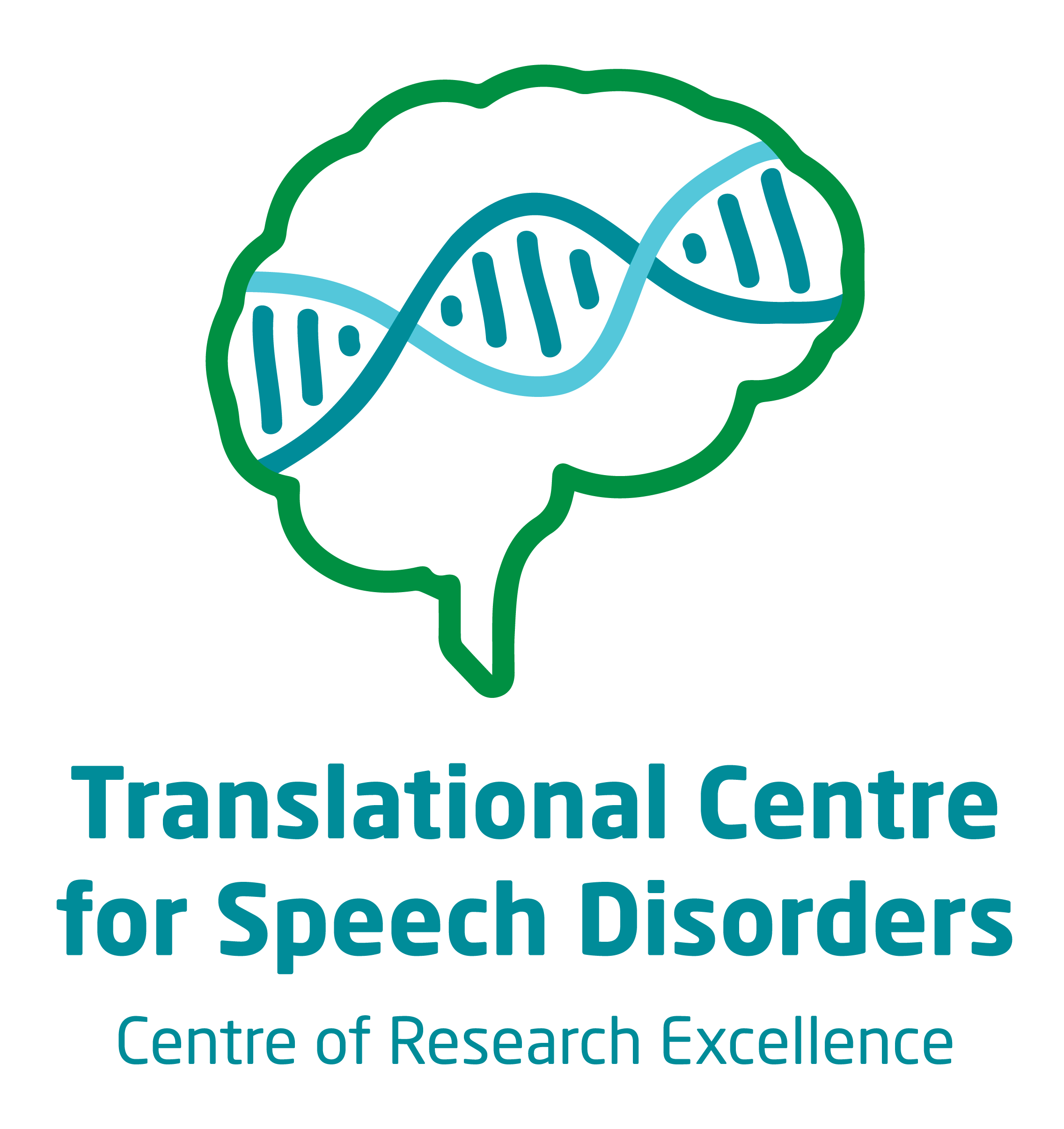Floating Harbor Syndrome
What is Floating Harbor Syndrome (FHS)?
Floating Harbor Syndrome (FHS) is a genetic condition caused by pathogenic variants in the SRCAP gene.
Individuals with FHS have short stature, and some individuals also have health conditions such as hearing and vision impairment, seizures, and urogenital anomalies.1
Contact
For further information, do get in touch with the CRE Speech and Language team at:
Email: geneticsofspeech@mcri.edu.au
Phone: (03) 9936 6334
Frequently asked questions
Most individuals with FHS show bone age delay until between 6-12 years old.2 Skeletal and dental anomalies are also common, as well as early puberty in some individuals. Vision impairment, primarily hyperopia and strabismus, and conductive hearing loss are often noted. Seizures have been observed in approximately 10% of individuals. Additionally, gastrointestinal, and genitourinary have been recorded in FHS.1
The cognitive ability of individuals with FHS can range from average cognition to intellectual disability in the moderate range.2 Speech and language skills are usually more impaired than cognition.2
From what has been reported in the research literature, children begin saying their first words between 1 and 4 years old, with most individuals around 2-3 years old.3,4,5
Individuals with FHS have speech impairment, primarily childhood apraxia of speech (CAS) and dysarthria.2 The most common dysarthria feature is hypernasality.
Younger children tend to have a more severe speech impairment than older children.2 Otherwise, little is known about change in speech and language characteristics from childhood through to adulthood.
In one publication with 10 individuals with FHS, four of those ten individuals attended mainstream school with supports, whilst six individuals attended special school.2 The type of school that a child attends will depend on their specific support needs, alongside how well a school’s services can meet a child’s needs. Reading and spelling are challenging for individuals with FHS.2
There is no research on speech and language interventions that are specifically designed for individuals with FHS. Currently, interventions are specific to an individual’s needs and goals and require a speech pathologist to ensure that current best-evidenced based therapies are implemented.
There are a number of evidence-based treatments for childhood apraxia of speech (CAS), such as the Nuffield Dyspraxia programme version 3 (NDP-3) and the Rapid Syllable Transition Treatment (ReST) which may be beneficial for some individuals.6 Focussing on specific speech features in individuals with dysarthria may also help individuals’ speech.7
References
- Nowaczyk, M. J., Nikkel, S. M., & White, S. M. (2019). Floating-harbor syndrome. GeneReviews®[Internet].
- White, S. M., Morgan, A., Da Costa, A., Lacombe, D., Knight, S. J., Houlston, R., ... & Hurst, J. A. (2010). The phenotype of Floating–Harbor syndrome in 10 patients.American Journal of Medical Genetics Part A, 152(4), 821-829.
- Budisteanu, M., Bögershausen, N., Papuc, S. M., Moosa, S., Thoenes, M., Riga, D., ... & Wollnik, B. (2018). Floating-Harbor syndrome: Presentation of the first Romanian patient with a mutation and review of the literature.Balkan Journal of Medical Genetics, 21(1), 83-86.
- Majewski, F., & Lenard, H. G. (1991). The floating-harbor syndrome.European journal of pediatrics, 150(4), 250-252.
- Rosen, A. C., Newby, R. F., Sauer, C. M., Lacey, T., Hammeke, T. A., & Lubinsky, M. S. (1998). A further report on a case of Floating-Harbor Syndrome in a mother and daughter.Journal of clinical and experimental neuropsychology, 20(4), 483-495.
- Morgan, A. T., & Vogel, A. P. (2009). A Cochrane review of treatment for childhood apraxia of speech. European journal of physical and rehabilitation medicine, 45(1), 103-110.
- Pennington, L., Parker, N. K., Kelly, H., & Miller, N. (2016). Speech therapy for children with dysarthria acquired before three years of age. Cochrane Database of Systematic Reviews, (7).






